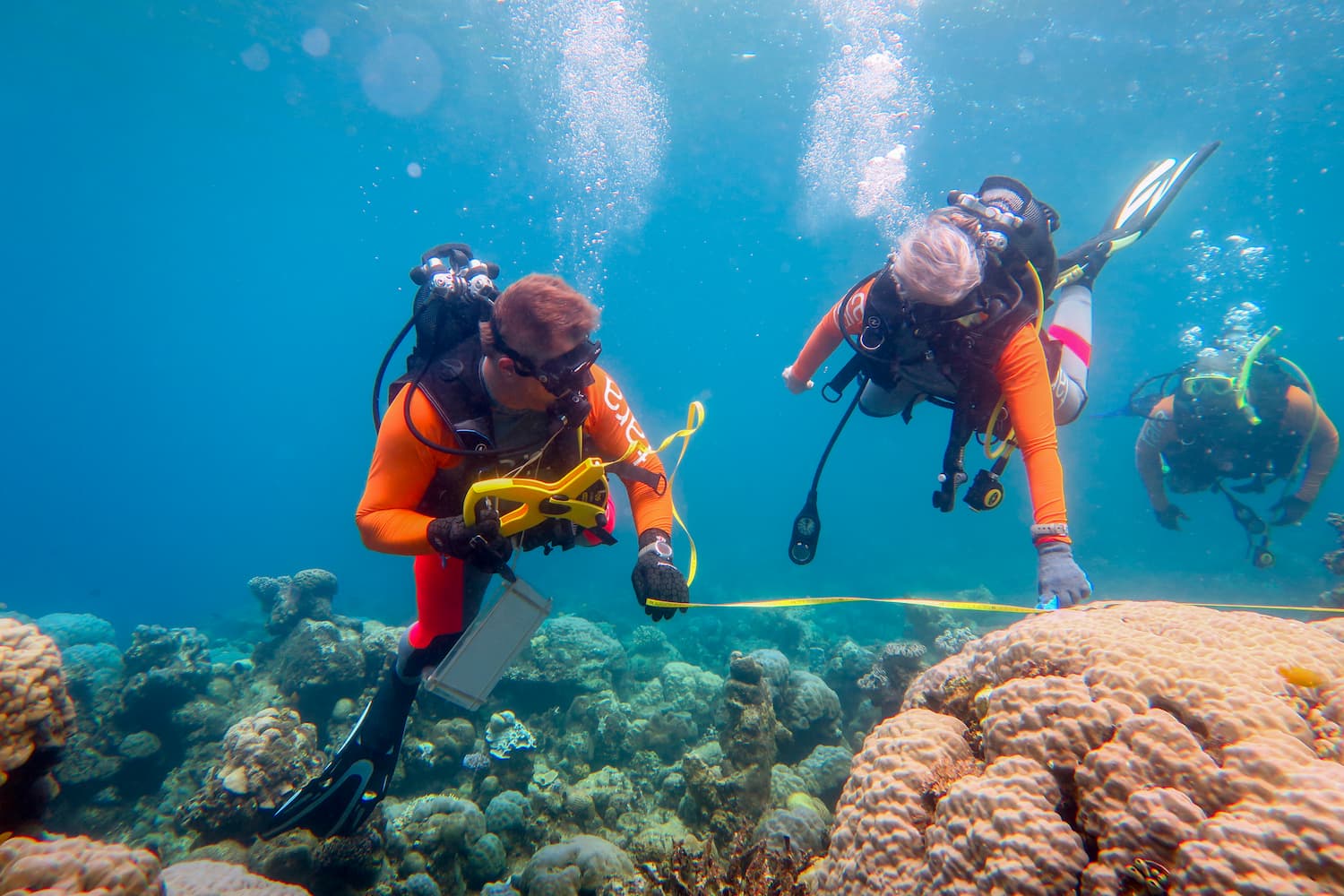Tara Pacific: Towards a new understanding of coral reefs, sentinels of climate change
Coral reefs are essential to the health of the Ocean and to human societies. Yet, they are strongly threatened by climate change and pollution. For two years, the schooner Tara has examined these ecosystems to better understand their decline. By rethinking the way we study them, the Tara Pacific expedition brings a new perspective on reefs that have fascinated us for hundreds of years.
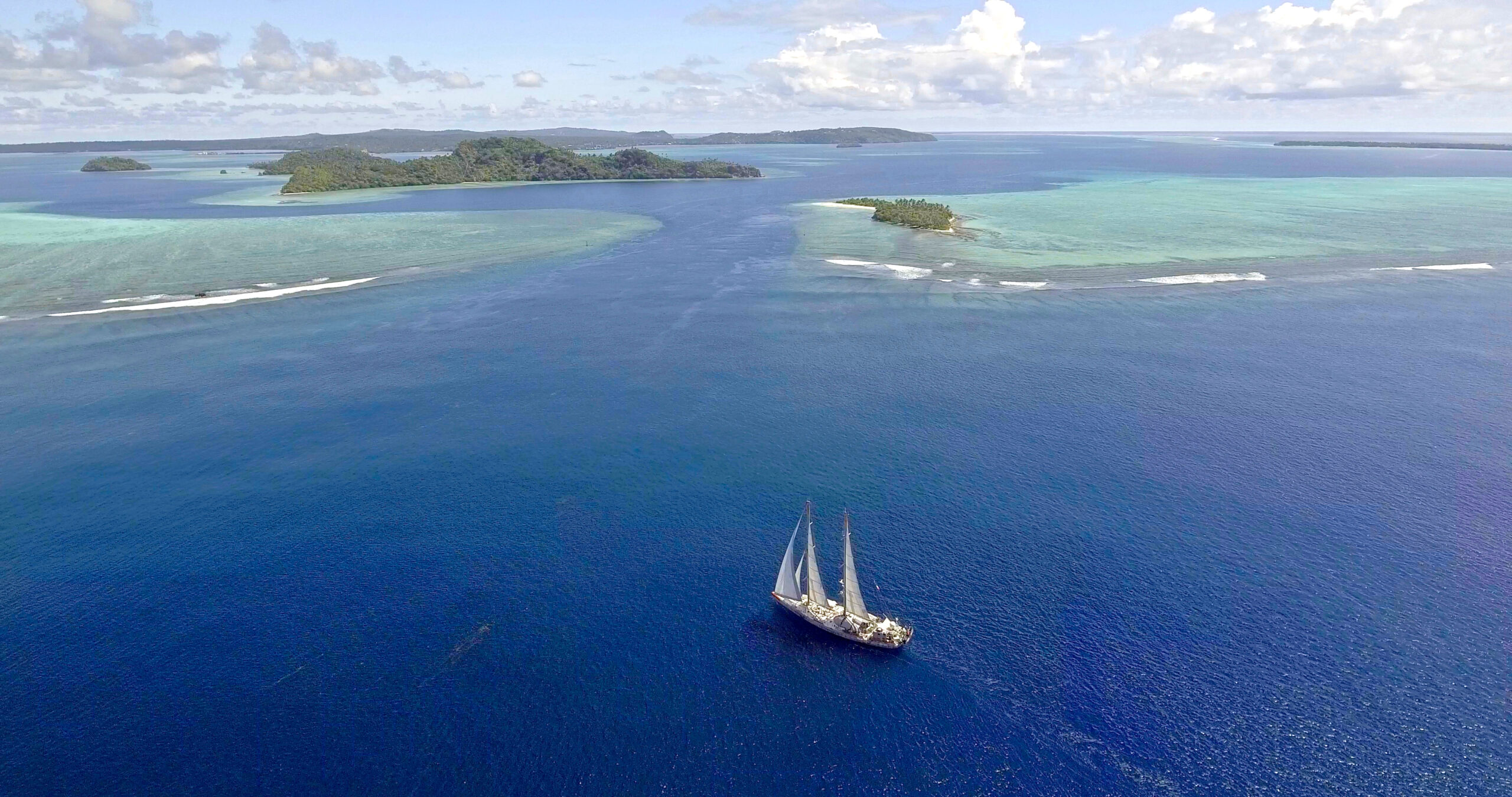
What is coral?
Coral: animal, vegetable, mineral?
When observing a coral on a reef, we do not observe an animal, nor an alga, nor a rock, but all three combined. Indeed, a coral is a colony of animals fixed on their limestone skeleton, sheltering in its tissues micro-algae which give them their bright colors. These animals, called polyps, are tiny anemones with a body and tentacles surrounding their “mouth”. The polyps build a calcareous skeleton at their base that they share with the whole colony. What appears to be a single organism is in reality a skeleton built by thousands of polyps!
A model of symbiosis
Polyps also have the particularity of not being able to feed themselves alone: what their tentacles allow them to capture is not enough for their survival. Over the course of evolution, they have therefore been associated with micro-algae, the zooxanthellae, which now live fixed in the tissues of the polyps. The algae benefit from a sheltered support exposed to sunlight, as well as from CO2 and waste released by the polyps, two elements necessary for photosynthesis. The polyp uses oxygen and energy molecules, especially carbohydrates, produced by the zooxanthellae. This interaction is a symbiosis: each of the two organisms, polyp and zooxanthellae, is essential for the survival of the other.

This relationship between these two organisms has thus built on the coasts and around islands true oases of life, with abundant biodiversity and impressive biological productivity, throughout the intertropical zone of the different ocean basins. The construction of these ecosystems is also explained by other factors. The main one is called “Island mass effect“. It refers to the fact that deep ocean currents are affected by the presence of islands, inducing upwellings of deep water rich in nutrients. In addition, the mineral elements found in the land are regularly washed into the Ocean by rainfall and also enrich the island’s surroundings with nutrients and mineral salts. These nutrients benefit the phytoplankton and thus the entire food chain. The combination of this phenomenon with the presence of coral reefs explains the great richness of these ecosystems and their distribution on the whole planet.
An ecosystem essential to marine, island and human life
What are the roles of corals?
Coral reefs cover less than 0.2% of the Ocean’s surface. In such a tiny area, they are home to more than 30% of the marine species known to date. On 1 km2 of coral reefs is as much macroscopic biodiversity as in the whole metropolitan France.
Reefs are true oases of life and play many key roles for the ecosystem. These thousand-year-old constructions are mechanical barriers that protect coasts and islands from the force of waves and therefore from erosion (according to the sixth assessment report of the Intergovernmental Panel on Climate Change, some coral reefs absorb up to 97% of the energy of a wave). Their crevices are also shelters for many species that protect themselves from predators, especially during their early stages of development. The reefs are thus the nursery on which many populations of oceanic fish depend.
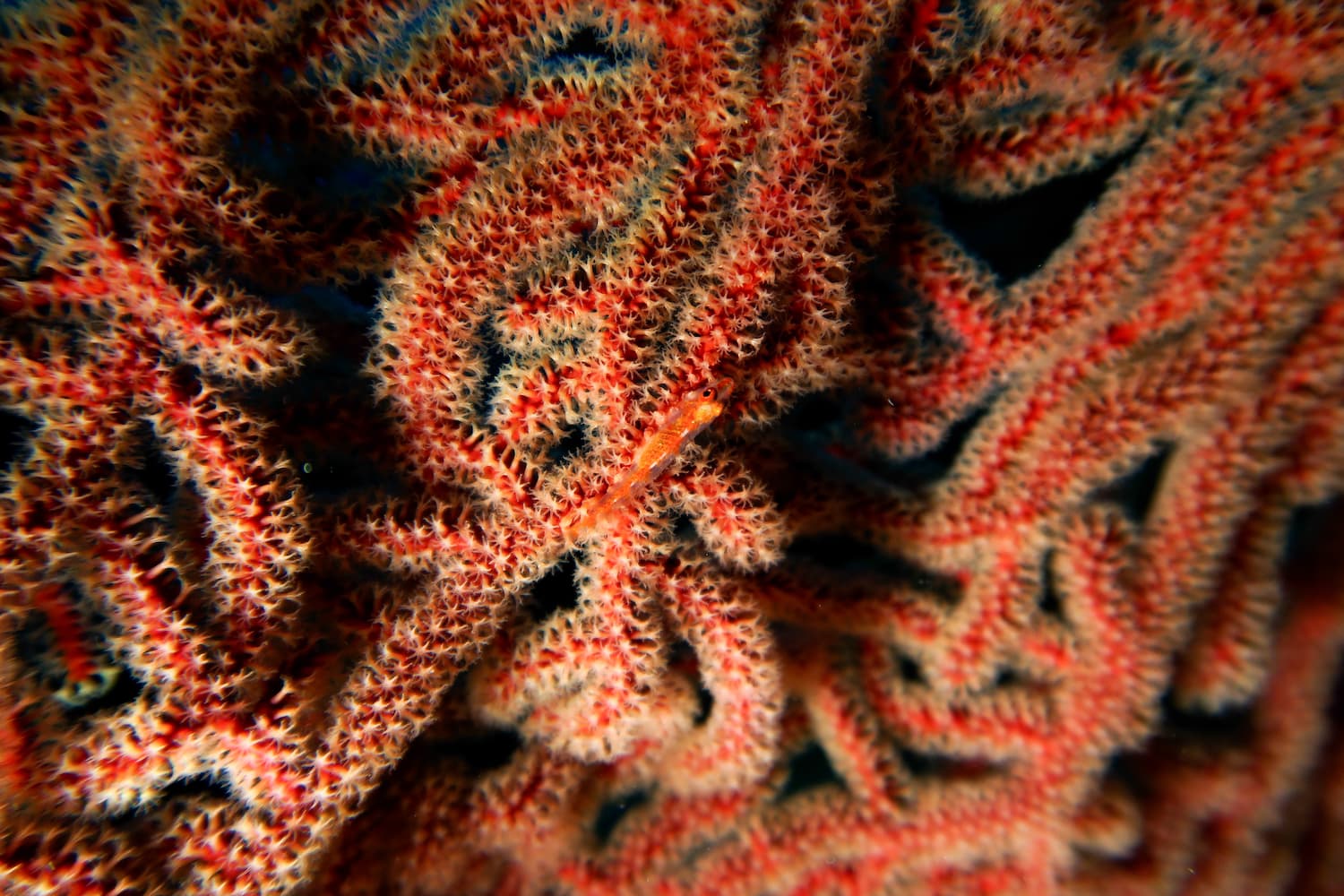
Ecosystems intimately linked to human communities
This unique wealth of coral reefs is intrinsically linked to the livelihood of many human societies. Worldwide, more than 500 million people depend directly on the survival of coral reefs. From tourism and fishing to coastal protection and medical interests, corals are one of the most valuable ecosystems on the planet.
In 2016, the French Coral Reef Initiative (IFRECOR) quantified the value of these services rendered to the population by coral reef ecosystems located in French waters at €1.3 billion per year, or nearly 2% of the country’s GDP. The French overseas territories are home to nearly 10% of the world’s coral reefs. This exorbitant figure may vary according to the methodologies and reflects a very utilitarian vision of nature, but has the merit of highlighting the vital importance of these ecosystems.
This vital importance of coral reefs for some human societies makes their understanding and conservation a priority issue.
Corals as indicators of climate change and human pressures
Organisms sensitive to global changes…
Greenhouse gas emissions from human activities around the world are having a deleterious impact on coral reefs.
In particular, the increase in the concentration of CO2 in the atmosphere dissolves large quantities of carbonic acid in the Ocean. The coral skeleton is essentially composed of limestone, a material that dissolves in acidic environments. The acidification of the ocean thus weakens the skeletons of corals.
But above all, the greenhouse effect, which causes an increase in global temperature, leads to an increase in the surface temperature of the ocean. In addition to acidification, the change in temperature threatens the future of corals much more rapidly.
The coral, or rather the balance of its symbiosis, is indeed extremely fragile. An increase in ocean temperature, even limited to a single degree Celsius, can lead to the death of a reef in a few days. Stressed by the heat, the algae separates from the coral host. Zooxanthellae separate from the coral host, according to a mechanism that scientists are still trying to explain. Deprived of their symbiont, a major source of nutrients and the source of their shimmering color, the corals bleach and die. If the rise in temperature is prolonged over 2 to 3 weeks, the separation becomes irreversible and the polyp ends up dying. This is called “bleaching“.
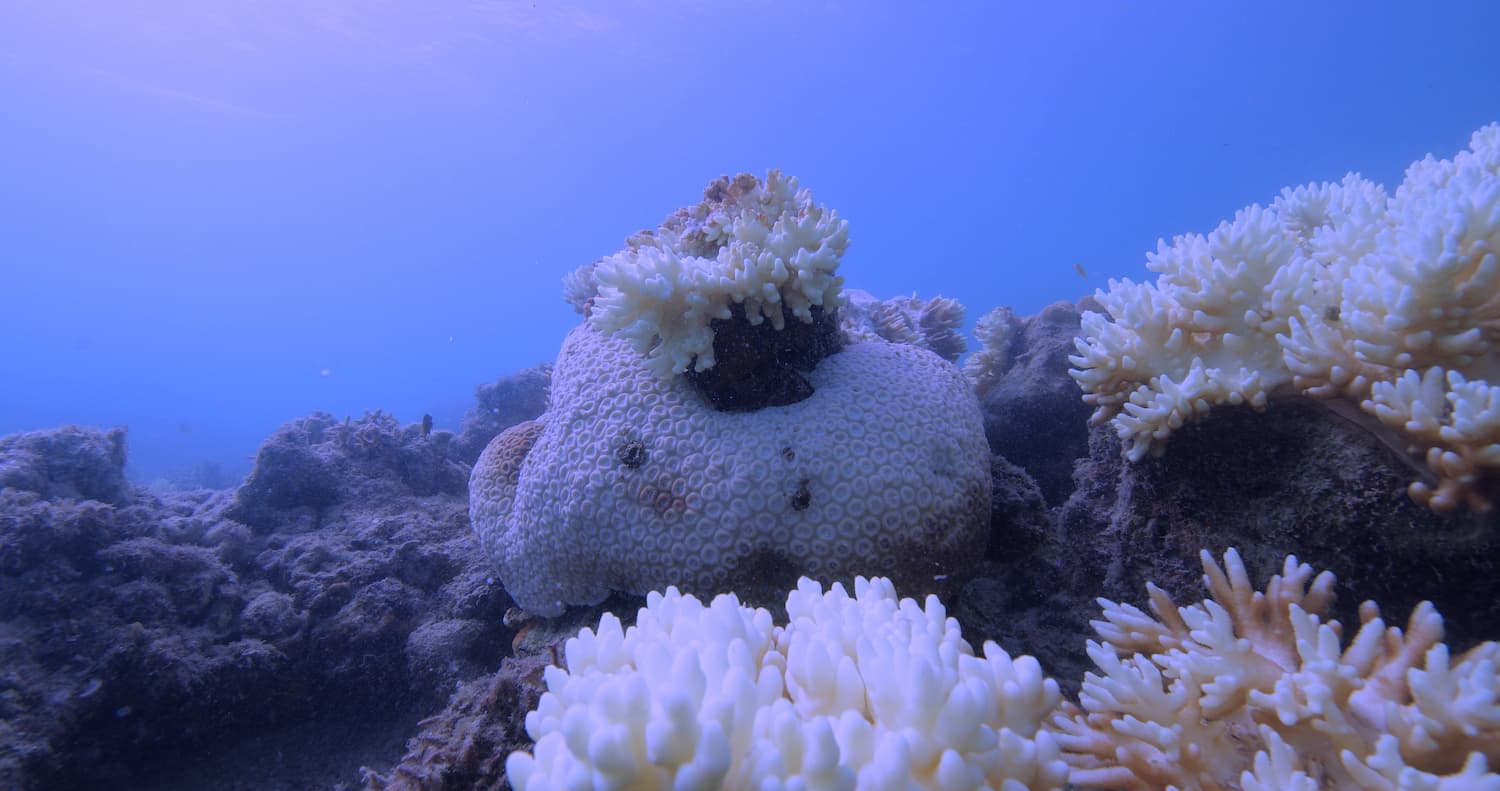
In addition, the increase of the global temperature, and thus of the ocean temperature, causes a rise in the sea level due to the dilation of the water by the heat. The coral reefs, originally implanted at an optimal depth for each species, are thus deepened and distanced from the source of light necessary for the photosynthesis of zooxanthellae. Characterized by their extremely slow growth rate, a few centimeters per year, the question is now whether coral reefs will grow fast enough to compensate for rising sea levels.
The increase in ocean surface temperature as well as the multiplication of heat waves, added to the acidification of the waters, are therefore a threat to corals which, in view of the current trends, will condemn them almost entirely by the end of the century: according to the IPCC, a 2°C warming of the global climate could cause more than 99% of warm water coral reefs to disappear by the end of the century.
… And threatened by local anthropic pressures
In addition to these global changes, there are numerous pressures characteristic of coastal human activities. Densely populated or exploited, coastal areas and the entire upstream watershed discharge industrial, chemical, phytosanitary and urban waste into the Ocean. These compounds can be directly toxic to corals, or promote the proliferation of organisms that compete directly with corals for space and light. This is the case of certain agricultural fertilizers which cause algal explosions, or “blooms”, asphyxiating the reefs.
Pressures also weigh on the reef itself: overfishing for food and export of exotic species for aquariums, destructive practices, exploitation of coral rock, urban expansion, mass tourism, etc. These threats multiply and add up, making coral reefs one of the most fragile ecosystems and one of the most exposed to anthropogenic pressures on the planet.
The coral reef heritage is essential both ecologically and economically. It is because of this major importance, for humanity as well as for biodiversity, that the Tara Ocean Foundation has decided to devote a unique expedition to it, capable of responding to the challenges posed by the evolution of these ecosystems: to understand how they function, to anticipate the environmental upheavals at work, and to enlighten political decisions in order to change our relationship with the Ocean on which we depend.
Tara Pacific, better understanding corals to limit the impact of human activities
The Pacific is home to 40% of the world’s corals and presents a significant diversity gradient. Southeast Asia is home to the “Coral Triangle“, an area of the globe where reef biodiversity is at its peak. Although these ecosystems have fascinated us for decades, considerable research efforts have only revealed the surface of their profound complexity.
An unprecedented scientific expedition
Following decades of research on coral reefs, Tara Pacific (2016-2018) has revolutionized the way we study them. By considering all of its components, from the most microscopic (yet fundamental) to the most visible and familiar, the scientists aboard the schooner have observed these ecosystems through a new prism. This unprecedented ecosystemic approach aimed to answer two major questions, which “traditional” methods have not yet fully clarified:
- How does this fragile ecosystem function
- What is its capacity to adapt to climate change and anthropic pressures?
The four research axes of Tara Pacific :
- Reef biodiversity
- Capacity of resistance, adaptation and resilience of these environments
- Reef health in the face of climate change
- Reef biology and human healt
In the legacy of the Tara Oceans expedition (2009-2013), as much for its integral approach as for its innovative and precursory dimension, this research campaign on the scale of the Pacific basin required the mobilization of a team and a ship for more than two and a half years. This duration, exceptional for an oceanographic expedition, allowed us to sample these different ecosystems with the same protocols, the same operators, the same equipment and the same calibrations. This unprecedented methodological homogeneity makes it possible to accurately compare results, which is crucial in this field where measurements remain very manual and highly biased by the human factor.
This precious data had to be analyzed in depth in the laboratory, in order to extract and valorize as much information as possible. These observations, soon to be published, will bring to the attention of the scientific community the first successful results of the Tara Pacific expedition. All the data will be made public, so that the whole society can benefit from this unprecedented scientific work.
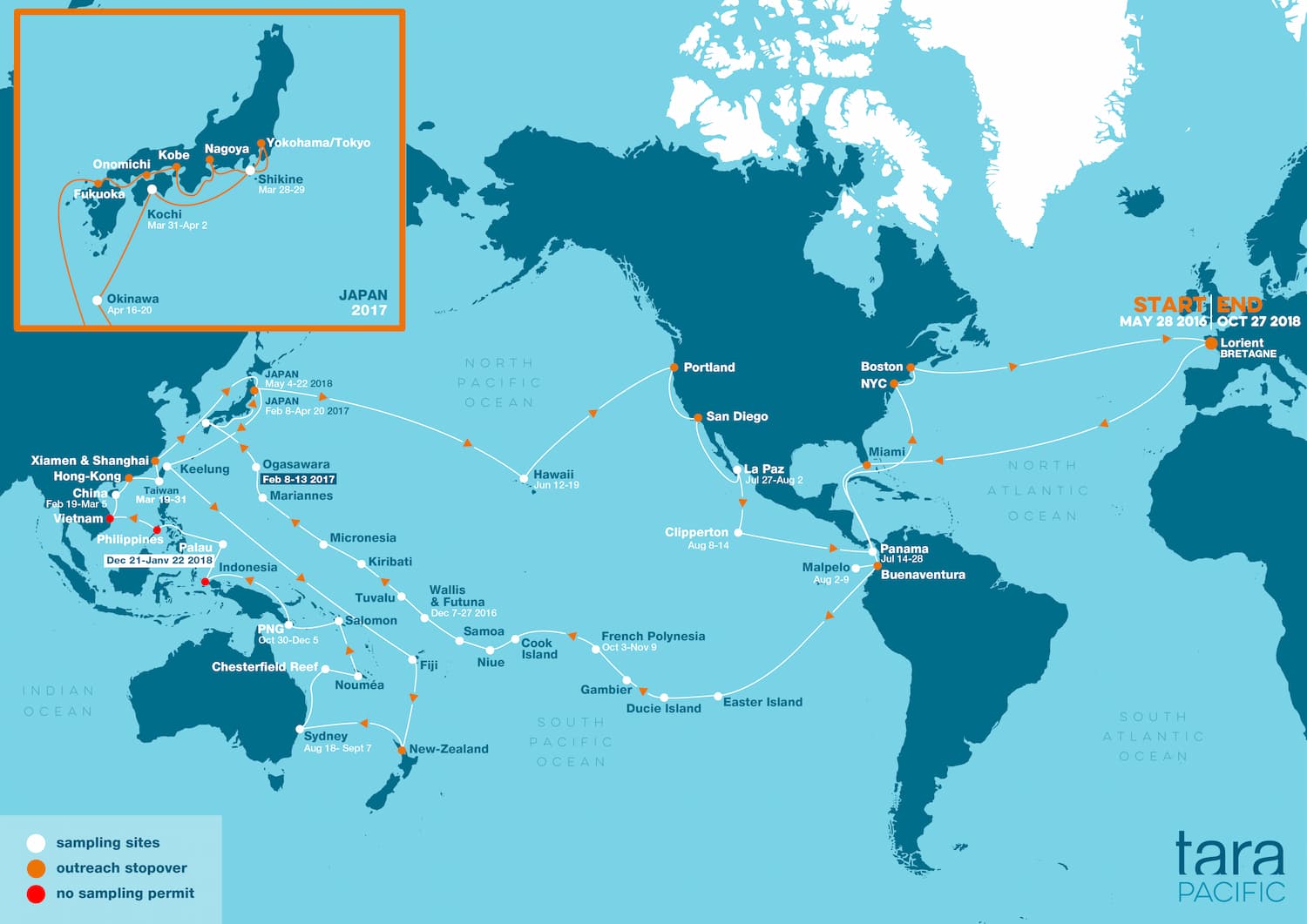
During these two and a half years, the team of sailors and scientists on board carried out rigorous and systematic sampling in 32 coral reef sites. In addition to the inevitable corals and fish, the expedition has also integrated into its protocols the study of microorganisms present in the surrounding waters. This is an unprecedented approach aimed at rediscovering the biodiversity of these reefs on all scales, from genetic sequences to the ecosystem. This level of precision aims to answer major questions concerning the health of coral reefs in the specific context of climate change. A large part of the islands and islets explored by the expedition are indeed remote and preserved from direct disturbance by human activities, which allows Tara Pacific to work on the capacity of resistance, adaptation and resilience of these habitats in the face of climate change. The introduction of genomics also allows the analyses to address a part of the reefs that is still largely unknown and to contribute to developing applications for medical research.
Protocols adapted to the study of all the compartments of the coral ecosystem
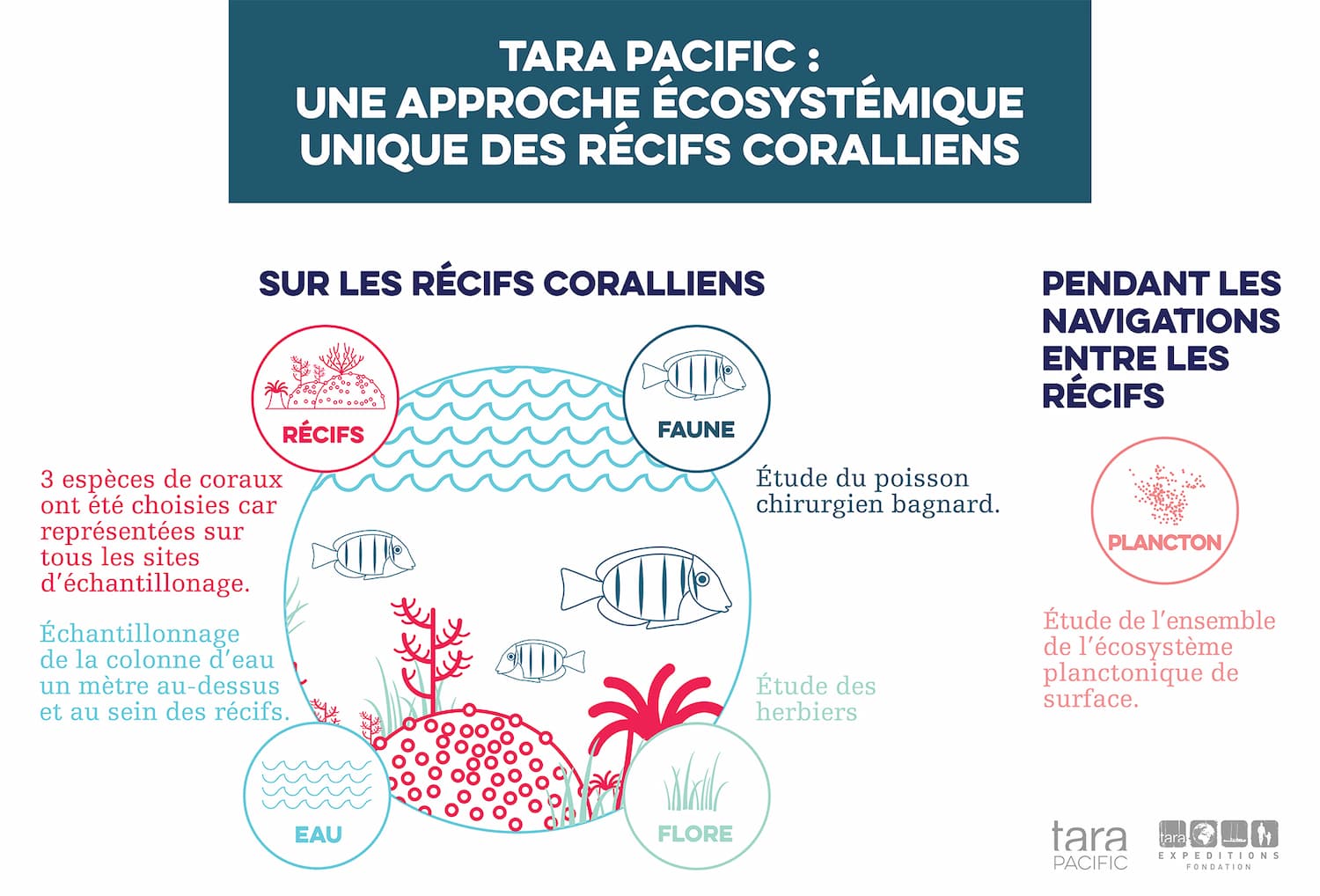
The protocols targeted three species of corals distributed throughout the Pacific basin:
- two species of branching corals, Pocillopora meandrina and Millepora platyphylla,
- one species of massive coral, Porites lobata.
Two sampling techniques were applied :
- the sampling of coral fragments on the colony (a few grams, without consequences on the integrity of the colony) for genetic studies
- coring on massive corals such as Porites lobata, which grow 1 cm per year. By taking a 40 cm core sample, it is therefore possible to go back in time, over the last 40 years, in the same way as for a glacial core or the slice of a tree.
These corals thus provide information not only on their growth rate over the past half-century, but also on the variation in water quality and the health of coral reefs in the recent past. They are good indicators for reconstructing changes in temperature, salinity and acidity (pH) related to climate change over the last 50 to 100 years. These data allow us to better understand the current environmental conditions and to establish models for future changes. About thirty cores from reefs of different islands were successfully collected.
To understand how the reefs evolve and the interactions within this ecosystem, the coral samples were complemented by plankton samples in the reef and in the water column separating it from the surface to inventory and quantify the micro-organisms living there. Finally, reef fish, also present in the entire Pacific basin, were collected to understand their distribution and the environment in which the fish evolved during their growth.
Like all living organisms, the existence of coral reefs depends on many factors (light, heat, acidity, nutrients, oxygen, metals). The data associated with each sample characterize the context in which it was collected. All these data collected (genetics, distribution and abundance of corals, fish, microorganisms) constitute the Tara Pacific database, which is remarkable for its exhaustiveness.
First results and perspectives for Tara Pacific data
Two and a half years of expeditions, on a scale never before achieved for these ecosystems, which are nevertheless regularly studied: Tara Pacific brings to the scientific community a colossal data set with unprecedented comparability. The massive sampling allowed us to photograph the health of the Pacific corals at the time of the schooner’s passage, which will allow scientists to refer to this “time zero” later on to evaluate the evolution of the reefs. The results of the analyses that followed the expedition will now be published soon and will be put into databases accessible to all.
Like the Tara Oceans expedition, the Tara Pacific databases will not fail to benefit scientists worldwide, and perhaps even influence the protocols for monitoring the health of the reefs. It will also allow civil society and institutions to take up the subject with precision, in order to implement the necessary conditions for the preservation of these ecosystems.
